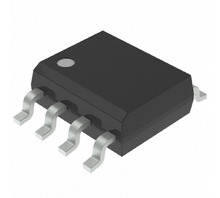Manufacturer Part Number
ATECC508A-SSHDA-B
Manufacturer
Atmel
Introduction
The ATECC508A is a secure element that provides a hardware-based root of trust for Internet of Things (IoT) and other embedded applications. It offers a turnkey hardware-based authentication solution to protect against cloning and other threats.
Product Features and Performance
Hardware-based cryptographic co-processor with secure hardware-based key storage
Supports various cryptographic algorithms including ECDSA, ECDH, and SHA-256
Provides secure boot, secure firmware updates, and secure data storage
Low power consumption and small form factor 8-SOIC package
Reliable and tamper-resistant design
Product Advantages
Strengthens security by providing a hardware-based root of trust
Simplifies implementation of secure authentication and data protection
Reduces development time and costs compared to software-only security solutions
Reliable and tamper-resistant design ensures long-term security
Key Technical Parameters
Cryptographic algorithms: ECDSA, ECDH, SHA-256
Operating temperature range: -40°C to +85°C
Supply voltage: 2.0V to 5.5V
Current consumption: 2mA typical, 10mA max
Quality and Safety Features
Certified to Common Criteria EAL5+ and EMVCo security standards
Designed to resist physical and side-channel attacks
Secure key storage and secure boot capabilities
Compatibility
Compatible with a wide range of microcontrollers and embedded systems
Integrates seamlessly with existing IoT and security frameworks
Application Areas
IoT device authentication and secure data protection
Secure firmware updates and secure boot
Secure communication and data encryption for industrial, medical, and consumer applications
Product Lifecycle
The ATECC508A is a current and actively supported product
Replacement or upgrade options are available from Atmel/Microchip
Key Reasons to Choose This Product
Provides a hardware-based root of trust to strengthen security
Simplifies implementation of secure authentication and data protection
Certified to high security standards for reliable and tamper-resistant operation
Low power consumption and small form factor for space-constrained designs
Wide compatibility and seamless integration with existing systems and frameworks




 ATECC508A-MAHHL-TAtmel (Microchip Technology)
ATECC508A-MAHHL-TAtmel (Microchip Technology) ATECC608A-SSHCZ-TMicrochip TechnologyIC AUTHENTICATION CHIP 8SOIC
ATECC608A-SSHCZ-TMicrochip TechnologyIC AUTHENTICATION CHIP 8SOIC ATECC508A-SSHDAMICROCH
ATECC508A-SSHDAMICROCH